Communiqué
Super Cats, A NATURE Miniseries | Premieres October 24
< < Back toProwl with the World’s Top Predators in
Super Cats, A Nature Miniseries
Nature Season 37 premieres with three-part miniseries
Wednesdays, October 24-November 7 at 8 p.m. on PBS
Stalking in the shadows, prowling almost every continent, cats are one of the world’s most diverse and successful predators. But there is far more to these charismatic and misunderstood animals than most people recognize. Filmed over 600 days in 14 countries and featuring 31 species of cat, this groundbreaki
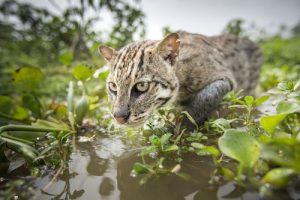
ng three-part miniseries narrated by F. Murray Abraham uncovers the secret lives of big cats and introduces behaviors captured on film for the first time, using the latest camera technology and scientific research. Super Cats, A Nature Miniseries premieres nationwide Wednesdays, October 24-November 7 at 8 p.m. on PBS. Each episode will be available to stream the following day at pbs.org/nature and on PBS apps.
From the solitary bachelor snow leopard in the Himalayas, to the elusive swamp tiger of South Asia, to a remarkably efficient Californian bobcat that is blind in one eye, Super Cats, A Nature Miniseries reveals how cats survive and thrive in all four corners of the globe. Nature uncovers their social sides, their complex communication, devoted parental care, courtship rituals, hunting patterns and more.
Advances in technology allowed for several on-camera firsts, including the nocturnal pursuits of a tiny but deadly black-footed cat in South Africa who hunts more in one night than a leopard does in six months. Remote cameras capture exclusive intimate moments between a mother Pallas’ cat and her kittens. Low-light technology exposes a true rarity: a puma preying on Magellanic penguins, one of the few successful hunts ever caught on film. A swamp tiger takes a bath in the sea — a phenomenon previously unseen on television.
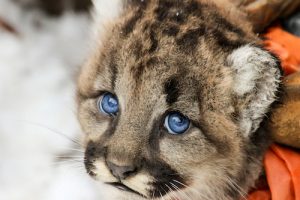
“Many of the cats filmed for this series are brand new to the Nature audience,” said Nature executive producer Fred Kaufman. “The lengths these filmmakers went to get never-before-seen footage of some of the world’s most elusive creatures makes this a truly exciting start to our 37th season.”
Episode 1, “Extreme Lives,” premieres Wednesday, October 24 at 8 p.m.
Meet the planet’s ultimate cats. Cheetahs are renowned as the fastest animal on land, but the latest scientific research suggests that speed isn’t actually their greatest weapon. In Sri Lanka, a tiny rusty spotted cat explores his forest home. A male snow leopard, perhaps the world’s most lonesome cat, searches for a mate in the Himalayas. The Canada lynx lives farther north than any cat, relying on snowshoe hares to survive the bitterly cold winters. An African leopard mother fights to raise her cub in the worst drought in decades. In Tanzania, lions form super prides in order to hunt giant prey.
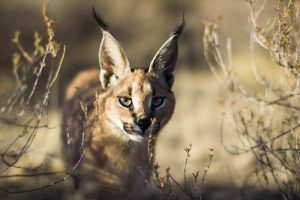
Episode 2, “Cats in Every Corner,” premieres Wednesday, October 31 at 8 p.m.
Discover how cats have conquered the world, thriving in almost every landscape on Earth. In the wetlands of Asia, fishing cats have adapted to an aquatic lifestyle. In the world’s oldest desert, Africa’s youngest lion pride survives against the odds. A military-grade thermal camera in Costa Rica peers into the dark to find a pregnant jaguar waiting for turtles on a tropical beach. High in the forest of Central America, a female margay leaps from tree to tree, slow-motion footage revealing her acrobatic skills. In California a bobcat, blind in one eye, seizes an opportunity to hunt gulls on a secluded beach. At low tide in the Sundarbans of India and Bangladesh, a rarely seen swamp tiger emerges from the mangrove forest
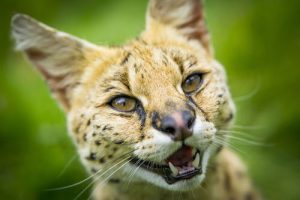
to patrol his shorelines. Then there’s Africa’s black-footed cat, the smallest and deadliest of all.
Episode 3, “Science and Secrets,” premieres Wednesday, November 7 at 8 p.m.
Scientists are studying cats in greater detail than ever before. New approaches and technologies help uncover some of the cats’ most intimate secrets, including the cheetah’s remarkable gymnastic abilities and why lions are able to hunt so cooperatively. Conservationists are fighting to protect the most endangered species around the globe, such as the Iberian lynx, once considered the rarest cat on the planet.
Now in its 37th season on PBS, Nature brings the wonders of natural history to millions of American viewers. The series has won more than 700 honors from the television industry, the international wildlife film communitie
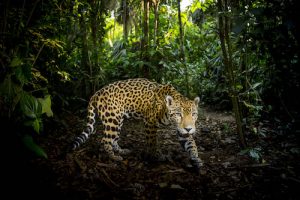
s and environmental organizations, including 18 Emmys and three Peabody Awards.
Super Cats, A Nature Miniseries is a BBC Studios Production for PBS and BBC with THIRTEEN Productions LLC, co-produced by France Télévisions. For Nature, Fred Kaufman is executive producer and Bill Murphy is series producer. For BBC, Mike Gunton is executive producer and Gavin Boyland is series producer. The miniseries is narrated by F. Murray Abraham.
Support for this Nature program was made possible in part by the Arnhold Family in memory of Clarisse Arnhold, Sue and Edgar Wachenheim III, the Kate W. Cassidy Foundation, the Lillian Goldman Charitable Trust, Kathy Chiao and Ken Hao, the Anderson Family Fund, the Filomen M. D’Agostino Foundation, Rosalind P. Walter, the Halmi Family in memory of Robert Halmi, Sr., Sandra Atlas Bass, The Arlene and Milton D. Berkman Philanthropic Fund and by the Corporation for Public Broadcasting, and by the nation’s public television stations.

